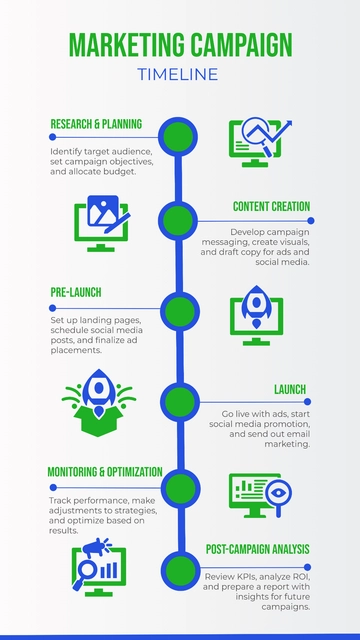Free Marketing Buyer Persona

I. Introduction
Understanding your target audience is crucial for crafting effective marketing strategies. A well-defined buyer persona helps in aligning your marketing efforts with the specific needs, behaviors, and concerns of your ideal customers. This document outlines the detailed buyer personas for [Your Company Name], a marketing company, to guide the development and execution of targeted campaigns.
II. Demographic Information
The demographic section provides a snapshot of the basic characteristics of your target audience. This information helps in tailoring marketing messages that resonate with specific groups.
Age: Your ideal customers fall within the age range of [30-45 years]. This group is typically in mid-career positions, making significant decisions in their companies, and is familiar with modern marketing strategies and tools.
Gender: The gender distribution is balanced, with a slight majority of male clients at [55%] and female clients at [45%]. This balance ensures that marketing campaigns do not heavily favor one gender, allowing for a broader appeal.
Education: Most of your clients have at least a bachelor's degree, with a significant portion holding advanced degrees such as MBAs. This level of education suggests that your marketing content should be sophisticated, data-driven, and insightful to match their expertise.
Location: Your clients are primarily located in urban centers across [North America], including major cities like [New York, Los Angeles, and Chicago]. Urban clients often have access to advanced technologies and are more receptive to innovative marketing solutions.
III. Professional Information
The professional information section identifies the roles, industries, and work environments of your target audience. This helps in understanding their day-to-day challenges and aligning your solutions to their needs.
Job Titles: Your ideal clients hold titles such as [Marketing Director, Chief Marketing Officer (CMO), Brand Manager, and Digital Marketing Specialist]. These roles are directly responsible for making or influencing marketing decisions within their organizations.
Industry: Clients primarily come from industries such as technology, finance, retail, and healthcare. These sectors are highly competitive, and your services are essential for helping companies stand out in crowded markets.
Company Size: The companies you serve typically have [50-500] employees, classifying them as small to mid-sized enterprises (SMEs). These organizations often have dedicated marketing teams but may lack the in-house expertise or resources for specialized campaigns, making your services highly valuable.
Work Environment: Your clients work in fast-paced environments where they must quickly adapt to changes in market trends and consumer behavior. They value efficiency, innovation, and strategic thinking in their marketing partners.
IV. Behavioral Traits
Behavioral traits provide insight into how your clients approach their work, make decisions, and interact with marketing services. This understanding allows you to develop marketing strategies that align with their preferences and behaviors.
Decision-Making Process: Clients in this persona typically engage in a collaborative decision-making process, often involving input from multiple stakeholders and other department heads. They value data-driven insights and case studies that demonstrate ROI.
Pain Points: Common pain points include budget constraints, the need for measurable results, and staying ahead of the competition. Your clients are looking for solutions that can deliver quick wins while also contributing to long-term growth.
Communication Preferences: These clients prefer clear, concise communication with a focus on results and action items. They value regular updates and reports that keep them informed of the progress and effectiveness of marketing campaigns.
Technological Proficiency: Your clients are generally tech-savvy, and familiar with the latest marketing tools and platforms. They appreciate services that integrate well with their existing systems and provide easy access to data and analytics.
V. Goals and Motivations
This section delves into the goals and motivations driving your clients' decisions. Understanding these factors helps in positioning your services as essential to achieving their objectives.
Primary Goals: Clients are primarily focused on increasing brand awareness, generating high-quality leads, and improving customer engagement. They are also concerned with achieving a strong ROI on their marketing investments.
Long-Term Objectives: In the long term, these clients aim to establish their brands as industry leaders, expand into new markets, and build sustainable growth. They value partnerships that contribute to their strategic vision and support their broader business goals.
Key Motivations: Motivations include staying competitive, meeting or exceeding KPIs, and gaining recognition within their industry. Your clients are driven by a desire to see tangible results from their marketing efforts and to justify their expenditures to upper management.
Success Metrics: Success is measured by metrics such as lead conversion rates, customer acquisition costs, brand recognition, and overall sales growth. Clients expect your services to contribute directly to these outcomes, making regular performance reviews and adjustments critical.
VI. Challenges and Pain Points
Understanding the challenges your clients face allows you to offer solutions that address their most pressing issues. This section outlines the common pain points and how your company can alleviate them.
Budget Constraints: Many clients operate with limited marketing budgets and need to justify every expense. They are looking for cost-effective solutions that offer high ROI and can be scaled as needed.
Market Saturation: Operating in competitive industries, clients often struggle to differentiate their brands. They need innovative strategies that help them stand out in crowded markets and attract the right audience.
Evolving Consumer Preferences: Clients face the challenge of keeping up with rapidly changing consumer preferences and digital trends. They require up-to-date strategies that are flexible enough to adapt to these changes while maintaining consistency in their brand messaging.
Internal Alignment: Achieving alignment across various departments can be difficult, particularly when it comes to marketing initiatives. Clients need your expertise to create strategies that resonate with all stakeholders and can be implemented smoothly across the organization.
VII. Preferred Communication Channels
This section identifies the communication channels that are most effective for reaching your target audience. Understanding where and how your clients prefer to engage with content is key to successful marketing efforts.
Email: Email remains the preferred communication channel for most clients, particularly for receiving detailed reports, proposals, and updates. Clients appreciate timely, well-organized emails that provide clear insights and next steps.
Social Media: Platforms like LinkedIn and Twitter are commonly used by your clients to stay informed about industry trends and engage with professional networks. Social media is also a valuable tool for sharing thought leadership content and showcasing successful campaigns.
Webinars and Virtual Meetings: Clients often participate in webinars and virtual meetings for professional development and to learn about new marketing strategies. Hosting regular webinars on industry trends and best practices can help you build credibility and strengthen relationships with your clients.
Phone Calls: For more urgent matters or complex discussions, clients prefer direct phone calls. This allows for real-time problem-solving and demonstrates your commitment to their success.
VIII. Product and Service Preferences
This section provides insight into the specific products and services that your clients are most interested in. Tailoring your offerings to meet these preferences ensures higher satisfaction and retention rates.
Digital Marketing Services: Clients have a strong interest in digital marketing services, particularly those that include SEO, content marketing, and social media management. These services help them improve their online presence and reach a wider audience.
Analytics and Reporting Tools: Clients value comprehensive analytics and reporting tools that allow them to track the performance of their marketing efforts. They prefer solutions that offer real-time data, customizable dashboards, and detailed reports.
Content Creation: High-quality content creation, including blog posts, videos, and infographics, is a top priority for clients. They look for content that not only engages their audience but also drives conversions and supports their brand messaging.
Branding and Strategy Development: Clients often seek assistance with branding and strategy development to ensure their marketing efforts align with their overall business goals. They appreciate strategic insights that can guide their long-term marketing plans.
IX. Decision-Making Criteria
The decision-making criteria are crucial for understanding how your clients evaluate and choose marketing services. By recognizing these criteria, you can better tailor your proposals and strategies to meet their expectations and secure their business.
Cost vs. Value: Clients are highly cost-conscious and seek services that offer the best value for their investment. They are willing to pay a premium for solutions that demonstrate clear and measurable benefits.
Expertise and Experience: Clients prioritize working with companies that have a proven track record in their industry. They look for partners with deep expertise, a strong portfolio of successful campaigns, and positive client testimonials.
Flexibility and Customization: The ability to customize services to meet specific needs is a significant factor in clients' decision-making. They value partners who can offer flexible solutions that are tailored to their unique challenges and objectives.
Support and Customer Service: Clients expect excellent support and customer service throughout the engagement. They prefer companies that are responsive, proactive, and committed to their success.
Criteria | Benchmark |
|---|---|
Cost vs. Value | Solutions that show a clear ROI within 6 months |
Expertise and Experience | 5+ years of relevant industry experience |
Flexibility and Customization | Customizable options in service packages |
Support and Customer Service | 24/7 support availability with dedicated account managers |
The table above outlines the key decision-making criteria that clients use when selecting marketing services. [Your Company Name] can better address client needs and differentiate itself from competitors. Emphasizing value, expertise, flexibility, and support will enhance your chances of securing and retaining clients.
Understanding and utilizing detailed buyer personas is essential for developing effective marketing strategies. By continuously refining these personas and aligning your services with their needs and preferences, [Your Company Name] can enhance its market position and achieve greater success. Regular updates and evaluations of these personas will ensure that your marketing efforts remain relevant and impactful.
- 100% Customizable, free editor
- Access 1 Million+ Templates, photo’s & graphics
- Download or share as a template
- Click and replace photos, graphics, text, backgrounds
- Resize, crop, AI write & more
- Access advanced editor
Know your audience with our Marketing Buyer Persona Template from Template.net. Fully customizable and editable, this template offers a detailed format for creating accurate and insightful buyer personas. Easily personalize the persona profiles, editable in our Ai Editor Tool, to reflect your target market’s demographics, behaviors, and needs. Download now!
You may also like
- Marketing Google Slide
- Marketing Letter
- Marketing Quotation
- Marketing Report
- Marketing Strategic Plan
- Marketing Plan
- Marketing Proposal
- Marketing Flyer
- Marketing Presentation
- Real Estate Marketing Plan
- Marketing Contract
- Marketing Agreement
- Marketing Resume
- Marketing Checklist
- Marketing Brochure
- Marketing Banner
- Marketing Schedule
- Marketing Vector
- Marketing Logo
- Marketing Chart
- Marketing Campaign Plan
- Marketing Budget
- Marketing Postcard
- Marketing Poster
- Marketing Facebook Post
- Marketing Instagram Post
- Marketing Newsletter
- Marketing Infographic





























